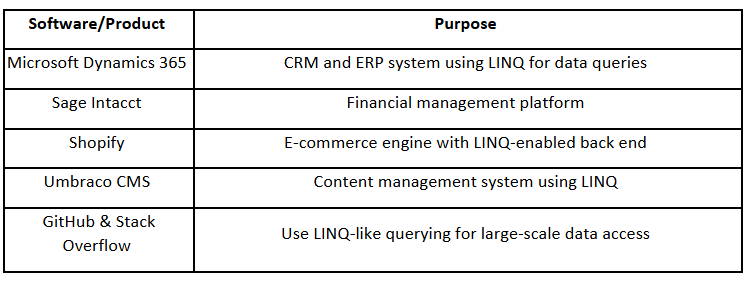Mastering LINQ: A Unified Way to Query and Transform Data Across Technologies
In the world of modern software development, querying and transforming data is a routine yet critical task. Traditionally, developers relied on database query languages like SQL to interact with relational data.

In the world of modern software development, querying and transforming data is a routine yet critical task. Traditionally, developers relied on database query languages like SQL to interact with relational data. However, with the evolution of application architectures and the rise of in-memory and NoSQL data, a more unified and expressive approach became necessary.
Enter LINQ (Language Integrated Query)—a game-changing feature introduced by Microsoft in the .NET framework that revolutionized how developers interact with data.
What is LINQ?
LINQ is a powerful query syntax embedded directly into C# and other .NET languages. It allows developers to query various data sources (collections, databases, XML, etc.) using a consistent, readable, and type-safe approach.
With LINQ, developers can:
- Filter data (Where)
- Transform data (Select)
- Group data (GroupBy)
- Join different datasets (Join)
- Sort results (OrderBy)
- Manipulate sets (Union, Distinct, etc.)
LINQ Operators at a Glance
LINQ provides a wide array of operators. Here’s a breakdown of some key Set Operators:
1. Union
Returns unique elements from two collections.
csharp
CopyEdit
var result = sequence1.Union(sequence2);
2. Except
Returns elements in the first collection but not in the second.
csharp
CopyEdit
var result = sequence1.Except(sequence2);
3. Distinct
Removes duplicate elements from a collection.
csharp
CopyEdit
var result = sequence.Distinct();
4. Intersect
Finds common elements between two collections.
csharp
CopyEdit
var result = sequence1.Intersect(sequence2);
LINQ Across Different Programming Languages
While LINQ is native to .NET, similar paradigms are available in other popular programming languages.
C# (Native LINQ)
csharp
CopyEdit
var evenNumbers = numbers.Where(n => n % 2 == 0).ToList();
Java (Streams API)
java
CopyEdit
List<Integer> evenNumbers = numbers.stream()
.filter(n -> n % 2 == 0)
.collect(Collectors.toList());
Python (List Comprehension)
python
CopyEdit
even_numbers = [n for n in numbers if n % 2 == 0]
JavaScript (Lodash Library)
javascript
CopyEdit
const evenNumbers = _.filter(numbers, n => n % 2 === 0);
Real-World Applications Using LINQ
Enterprise Resource Planning (ERP)
Manage sales, finance, inventory using LINQ for querying large datasets.
Customer Relationship Management (CRM)
Use LINQ to filter leads, track customer interactions, and analyze sales performance.
E-commerce Platforms
LINQ queries power product search, order management, and customer analytics.
Content Management Systems (CMS)
Retrieve and manipulate structured content using LINQ for efficient data access.
Financial Applications
Generate reports, perform calculations, and monitor transactions efficiently.
Popular Software That Leverages LINQ

Advanced LINQ Features

Conclusion
LINQ empowers developers with a fluent, consistent, and type-safe way to query data across various domains. Whether you're working with in-memory objects, XML, databases, or collections, LINQ simplifies data access and transformation.
Its influence can be seen across multiple languages and ecosystems, proving that the idea of declarative querying is here to stay.



